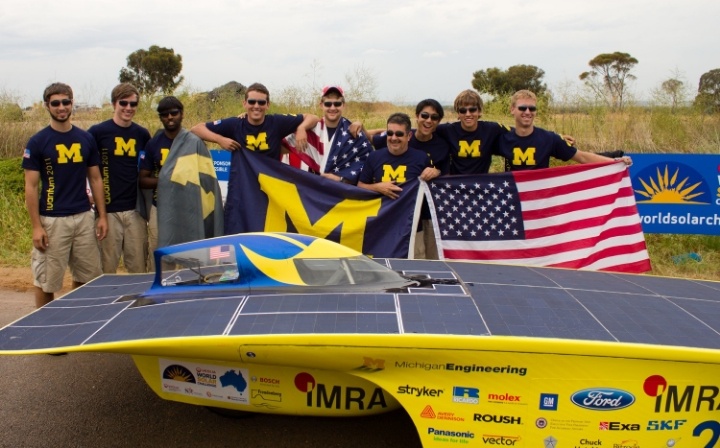
A Solar Race and Beyond
What does a team of college students racing solar cars in the Australian desert have to do with expanded solar power to the US electrical grid? Quite a bit it turns out.
As students from around the world prepare to race solar cars across the Australian Outback in the 1800 mile, 7-day World Solar Challenge that starts on Oct 18, a partnership between the University of Michigan team and IBM might well lead to more than just a place on the podium. IBM will be providing real time data predictions – drawn from over 10 years of cumulated weather data for actual temperature, cloud, and sun cover for specific locations - that will let the Michigan team make calculated decisions on how best to race their car, the Aurum.
The Car
The Aurum is covered by a deck of 65 square feet of solar panels which power a 5 kilowatt-hour lithium-ion battery; the entire car (driver included) weighs 550 pounds and can go highway speeds. In the World Solar Challenge competition, where the winner is usually decided by slim margins, knowing what lies ahead in terms of clouds or sun and how to keep a steady pace can prove game-changing
From Solar Cars to the Electric Grid
Helping students effectively race a solar car is a practical application of IBM's data, but the researchers have an even bigger goal: increasing the amount of solar power going into the electrical grid.
In July, IBM announced it would provide its solar forecasting data to government agencies and other organizations for a limited time, to show off the value of the technology.
As Ted Van Kessel, Sr., the primary IBM researcher said, "As major solar installations take on a great role in electricity production, the threat of unexpected clouds becomes serious. One good cloud bank can really hit you hard. If you’re managing a power grid and you suddenly have the equivalent of either a 1,000-megawatt nuclear plant, or a 1,000-megawatt coal plant drop offline, that’s a major loss.”
How the information will help the Michigan Solar Team - or the US electric grid - remains to be seen. But hopes are high in both cases.
Interested in installing solar? Click here for a free quote.
